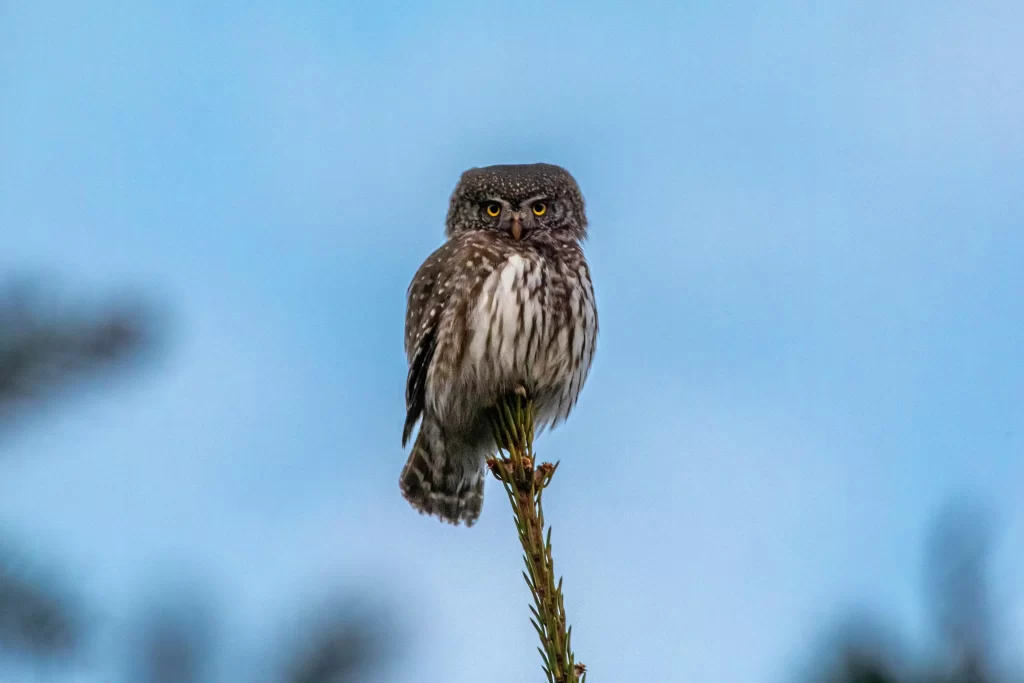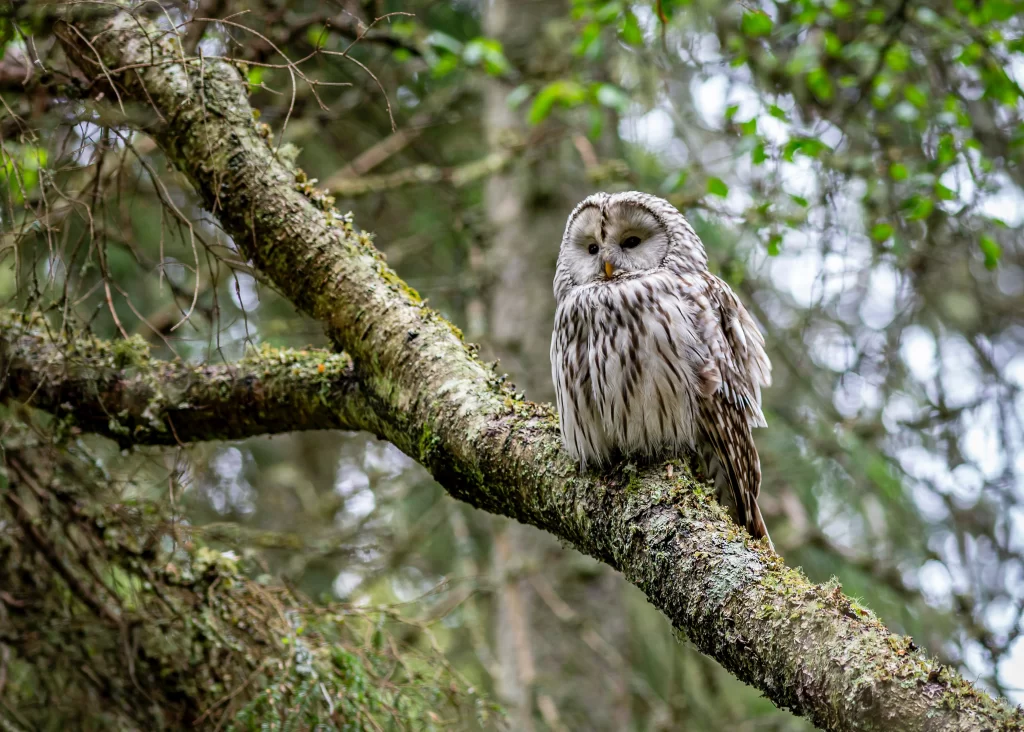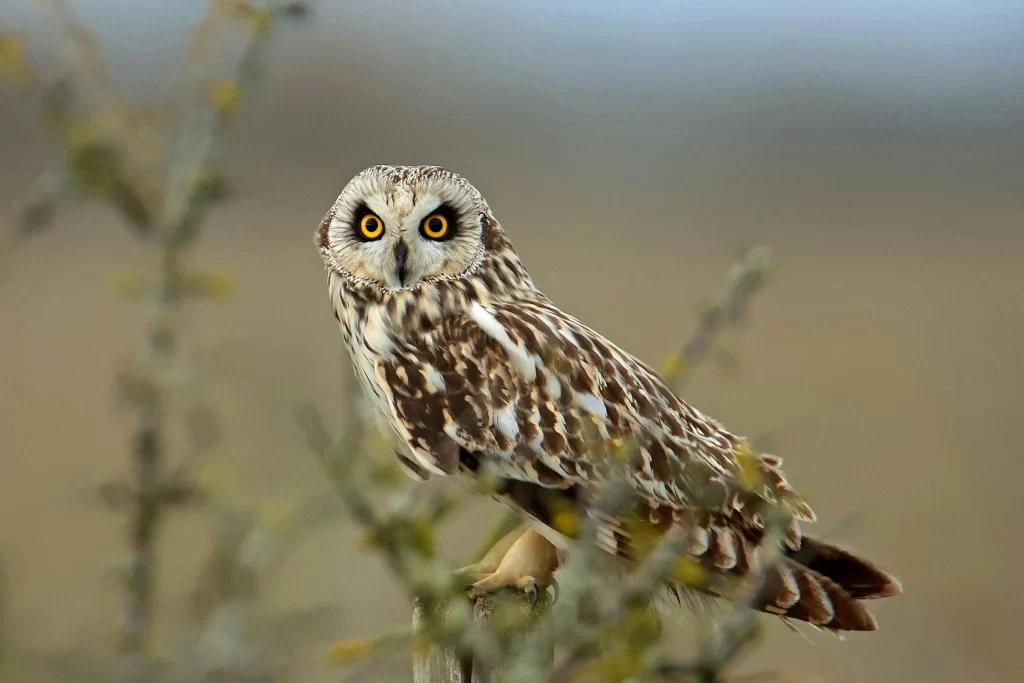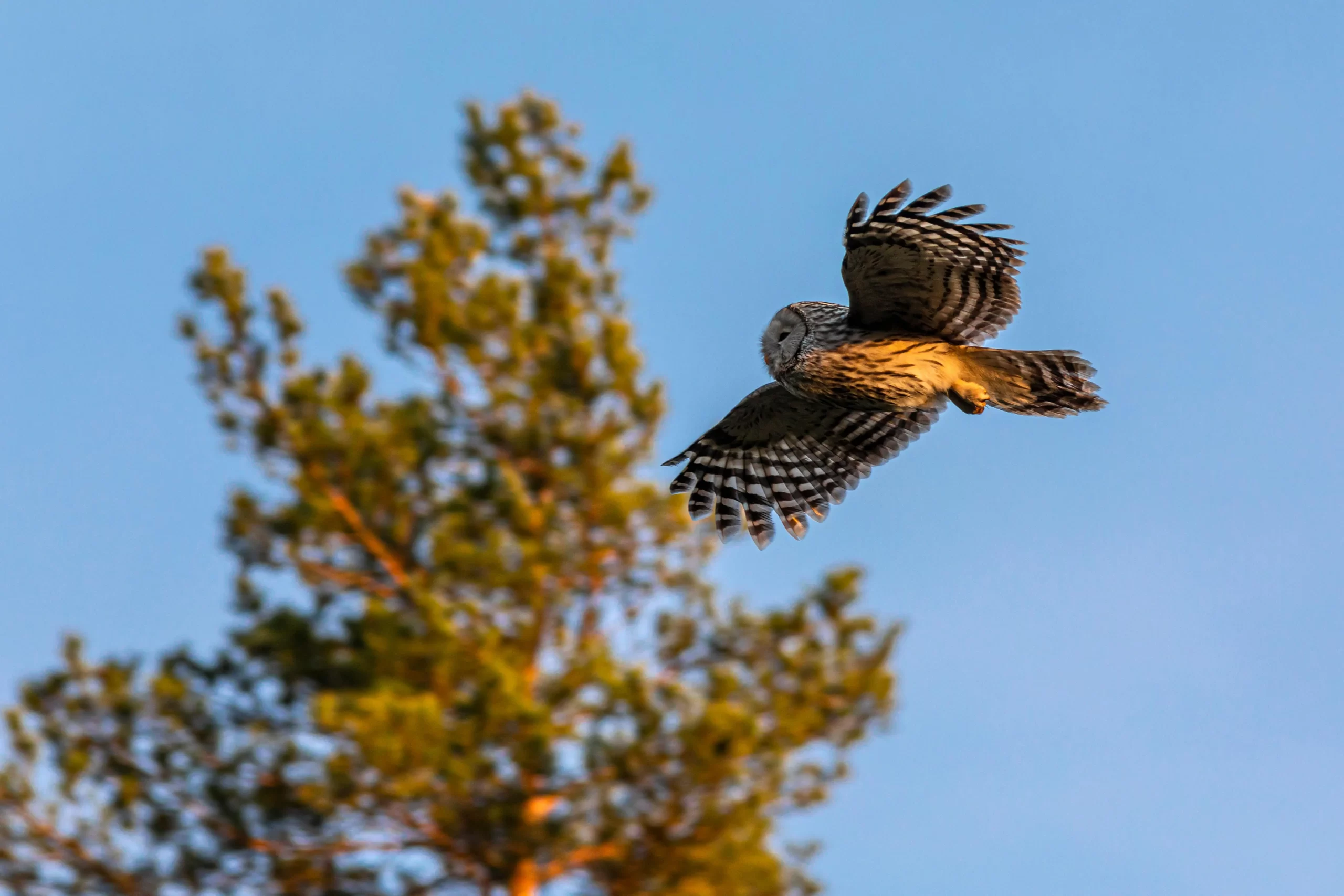Although owls are cryptic raptors, many birders are keenly aware when an owl is present around their property. Owls may be detected thanks to their calls, or a birder may stumble across an owl roost with lots of pellets and whitewash. Whatever the case, some have observed that owls are seemingly not present on their properties during winter. So, why is this – do owls migrate in the winter?
Yes, owls do migrate! Owls are capable of migrating just as seagulls, woodpeckers, and many other bird species. Now, although there are some migratory owls, this does not mean that all owls migrate. Owls may–indeed–remain around someone’s property for the entirety of the year, or they may depart for other locations as the weather begins to change.
Table of Contents
Now that we know that some owls migrate, let’s explore the different times of year at which these raptors may move around. Do owls migrate in the winter?

Do Owls Migrate In The Winter?
Winter is a challenging time for many bird species, and although most do not think of owls as being susceptible to difficult winter conditions, these birds of prey can be vulnerable during this time just like any other bird. Some even suspect that owls may hibernate during this time to avoid the worst of winter. So, do owls migrate in the winter to avoid unfavorable conditions?
Yes, some owls do migrate during the winter! Species like Snowy Owls may make nomadic, migratory movements in the middle of winter in response to food shortages elsewhere in their range. While a few owl species are known to make migratory movements in winter, what most people mean to ask is, “Do owls migrate in anticipation of winter?”.
Many more owl species migrate in anticipation of winter compared to migrating in the middle of winter. Thousands of owls migrate south for the winter in fall and return to their breeding grounds in the spring. This allows these owl species to avoid the worst of winter by overwintering in a location that is milder than their breeding grounds.
Do Owls Migrate In The Summer?
Migrating in the winter is understandable, as this time of year presents many challenges for owls. However, what do owls do come summer? Do owls migrate in the summer after they’ve raised their young?
No, owls do not tend to move around during the summer. Owls are very focused on raising young during this time of year. Considering their commitment to their young, migrating in the summer would not be feasible from a logistical standpoint.

Moreover, summer is the most bountiful time of year, as many creatures are raising their families during this time. Therefore, owls don’t need to migrate elsewhere to escape unfavorable conditions during this season.
As I mentioned earlier, owls will certainly migrate come fall, but they will stick to the same area in the summer.
Where Do Owls Migrate To?
Now that you know that owls migrate, you may be curious about the destinations in which they choose to spend their winters. Where do owls migrate to?
Many think of a warm beach getaway as the perfect winter location, but owls do not have such standards. No, these birds seek out locations that many would consider to be downright frigid in their own right. Some owls choose to winter in the Upper Midwest or in states in the western United States where temperatures routinely peak in the teens during winter. So, what gives? Why do owls migrate to such chilly places during the winter?
It turns out that the places in which owls spend the winter are much more hospitable in cold weather
compared to where they breed. For example, would you rather spend the winter in Minnesota or the upper reaches of Canada? This is a decision that many owls have to consider, and it has led numerous species to evolve migratory tendencies.
What Owl Species Migrate?
Now that you know about migrating owls, you may be curious to know more about the specific owls that partake in annual migrations, so let’s take a look. Here are some well-known owls that migrate:
- Burrowing Owl
- Long-eared Owl
- Northern Saw-whet Owl
- Short-eared Owl
As discussed earlier, some owl species make bi-annual migrations in preparation for winter, while species like Northern Hawk Owls and Great Gray Owls may move around in response to food shortages in a certain area.

Do Snowy Owls Migrate?
Snowy Owls are among the most captivating and well-known owl species. Some have been fortunate enough to observe these magnificent creatures when they show up south of their breeding range in winter. However, does this mean they’re migratory – do Snowy Owls migrate?
Yes, Snowy Owls participate in owl migration. However, they do not have typical consistent migrations in which they travel to roughly the same areas each year. So, why do Snowy Owls migrate in such erratic ways?
Well, their movements are dictated by the availability of prey. When prey is scarce in the northern reaches of North America, they will move south. Otherwise, scarcely any may south up in the lower 48 states if there is ample prey up north.
Therefore, Snowy Owls are not traditional migratory owls, being much more like Great Gray Owls or Northern Hawk Owls with their winter movements.
What Do Owls Eat In The Winter?
We know that owls are exceptional nocturnal predators that can consume a wide array of prey, but what do owls eat in the winter when some prey is scarce?
Well, many of the owls taking part in migrations will not need to shift their diets much during the winter. Indeed, small mammals such as voles and mice are common year-round meaning that they can provide a stable food source for owls.
Now, owls who live in a cold climate during the winter will have to give up on eating bats, frogs, snakes, and other creatures that are inactive during the winter. However, there will still be plenty of food available to these birds during this season.
Some owls may shift their habits a little bit during winter. Whereas owls are primarily nocturnal, some owls may be more apt to come out during the day during winter. They may do this to find food, evade predators, or simply to prepare for the upcoming night.
Conclusion
Those who completed this article should now be comfortable with the topic of owl migration, but in case you’re not, let’s review some facts:
- Are owls migratory birds? Yes, some species of owls are migratory, but the majority of owls are not
- Do owls migrate or hibernate? Owls do not hibernate, but some owls head south for the winter
- Do Snowy Owls migrate? Yes, many Snowy Owls are migratory

